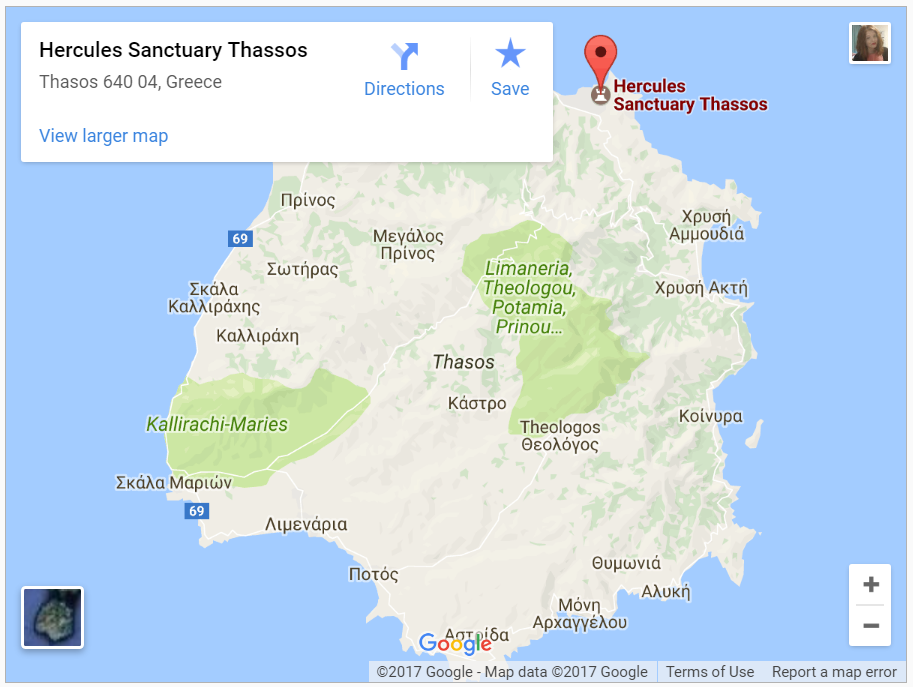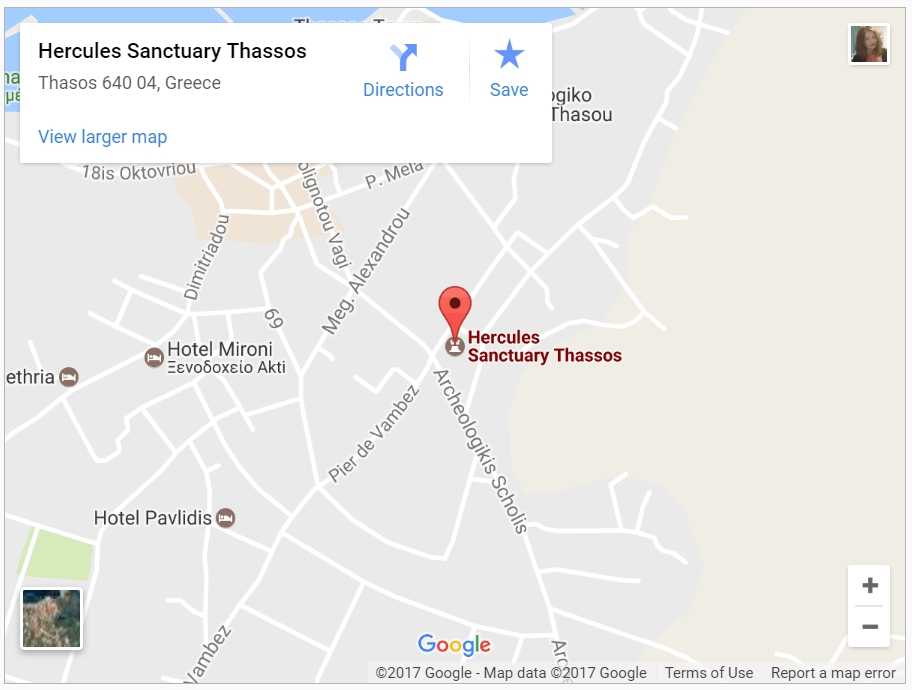Sanctuary of Heracles, Thasos
Archaeological Development
This sanctuary was a “complex of commensurate grandeur” – a large paved court surrounded by buildings on three sides and with the principal altar, facing East, in the centre. It wouldn’t have been as separate from the rest of the town as many sanctuaries, and would have been part of the town’s landscape, immediately apparent to the citizens. The 5th century re-buildings were on a much larger scale than the original 6th century rooms.
As you stand at the gate of Silenus, at the entrance to the sanctuary, the temple of Heracles is at the opposite end, at the very North -it would have been on a raised platform. Originally, it was just a single chambered naos, but was later embellished with a wide colonnade on all sides, giving it a square form, slightly different from the traditional rectangular temples, but the colonnade on all sides is very traditionally Greek.
To the west and at the front of this temple was the stepped and porched entrance to the temenos – this was the last addition to the sanctuary, in the 2nd century BC. It opened onto a paved court with the stepped altar in its centre, and a long gallery hall forming the opposite border (along to the right from the entrance at the gate of Silenus).
The South side was occupied by a porticoed building containing official administrative offices for the sanctuary and the banqueting rooms – where the important early summer feast the Heracleia was celebrated.
Gods/Heroes
The island was colonised by the Phoenicians in around 650 BC, – the temple they initially founded was to Melqart, the tutelary god of Tyre – the Greeks identified this god as the ‘Tyrian Heracles’, (Interpretatio graeca – the Greek practice of identifying foreign gods and linking them with their own gods) and as the island was Hellenised, the cult there was merged with the cult of Heracles; this area therefore became the sanctuary of Heracles.
Ritual Activity
Not too much is known about what took place ritually on the whole – the presence of an altar indicates that sacrifice took place, and the banqueting halls indicate the presence of festivals and feasting.
We know that a Heracleia festival likely took place in early Summer, although we do not know the details of this festival.
Other Activities
Pausanias (5.25.12) talks about the sanctuary, and so does Herodotus (2.44). Both discuss it in terms of the worship of the Tyrian Heracles.
The earliest ruins date to the 6th century BC. The majority of the ruins that remain are dated to the 5th century BC.
Historical Significance
The island was colonised by the Phoenicians in around 650 BC, who were probably attracted by its gold mines – the temple they initially founded was to Melqart – the Greeks identified this god as the ‘Tyrian Heracles’, (Interpretatio graeca – the Greek practice of identifying foreign gods and linking them with their own gods) and as the island was Hellenised, the cult there was merged with the cult of Heracles, and so this area became the sanctuary of Heracles.
Who used the site, and where did they come from?
Visitors to the site would have likely been locals, due to the more niche god that it was dedicated to, as well as its island location. Originally the visitors would have been the local Phoenicians, and as it was Hellenised by coming Greeks, these visitors would have also been Greek.
Select Site Bibliography
Pausanias 5.25.12
Herodotus 2.44
(on the Heracleia: Dem. 19.125; Aristoph. Frogs. 651; Paus. 9.32.2)
Location
The Sanctuary of Heracles is located on Thasos, the most northern of the Greek islands, at the north-east of the island – it is currently at the south of the modern town centre, and is at the south-western end of the area covered by Ancient Thasos – the majority of excavations have been clustered around this area.


